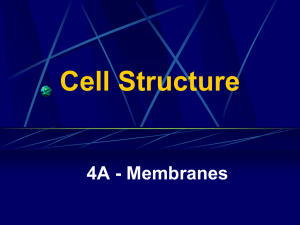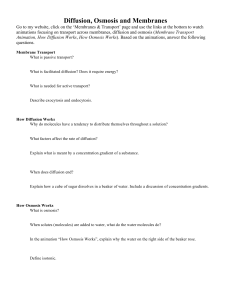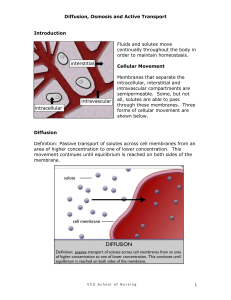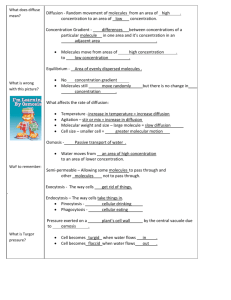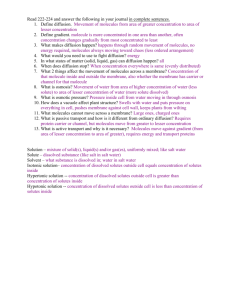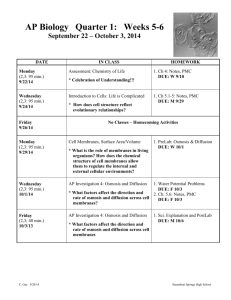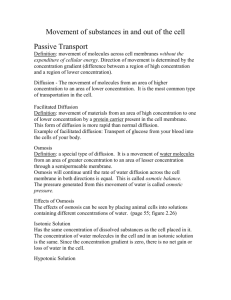Document
advertisement
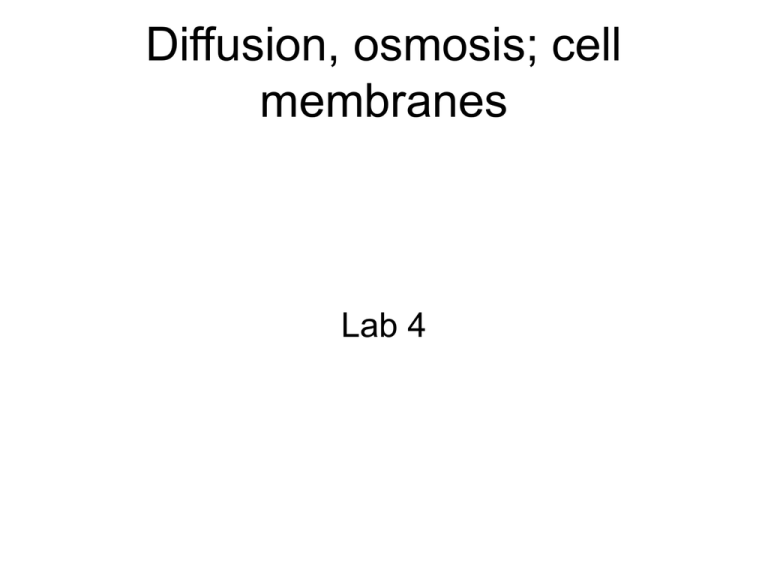
Diffusion, osmosis; cell membranes Lab 4 Solution • Making a saline water solution by dissolving salt (NaCl) in water. The salt is the solute and the water the solvent. Concentration • These glasses containing red dye demonstrate qualitative changes in concentration. The solutions on the left are more dilute, compared to the more concentrated solutions on the right. Diffusion-Brownian movement • The rate of diffusion is dependent on such factors as the temperature, the size of the molecule, concentration gradient and the type of medium. Diffusion and differentially permeable membranes • A differentially permeable membrane prevents the movements of some molecules but not others. • Osmosis • Special case of diffusion • Osmosis is the diffusion of water across a differentially permeable membrane. • Water molecules follows its concentration gradient and moves from the area of higher concentration to the area of lower concentration. Osmosis and the rate of diffusion along a concentration gradient • Isotonic- two solutions have equal concentrations of solutes. • Hypotonic- a solution with a lower concentration of solutes, especially those solutes that do not pass across the surrounding membranes. • Hypertonic- a solution with a high concentration of solutes. Osmotic effects on cells In an isotonic solution Animal cells In an hypertonic solution In an hypotonic solution plasma membrane nucleus Water mainly enters the cell, which may burst (lysis) No net movement of water Water mainly leaves the cell, which shrivels (crenation) Plant cells cell wall central vacuole nucleus plasma membrane chloroplast No net movement of water Vacuoles fill with water turgor pressure develops chloroplasts - next to the cell wall Copyright © The McGraw-Hill Companies, Inc. Permission required for reproduction or display. Vacuoles lose wate the cytoplasm shrinks(plasmolysis) chloroplasts- in the center of the cell Cellular membranes Thickness: 6-10 nm ● Functions: 1. retarding diffusion of selected molecules 2. housing receptor molecules that detect other cells or organelles 3. providing sites for active and passive transport of selected molecules 4. organizing life processes by providing surfaces to accommodate chemical reactions 5. helping maintain the integrity of cells ● Procedure 9.2 Procedure 9.3 Procedure 9.4 (Start this one first) Procedure 9.5 Procedure 9.6 (Observe only) Procedure 9.7 (Observe only) Procedure 9.8 Procedure 10.1
